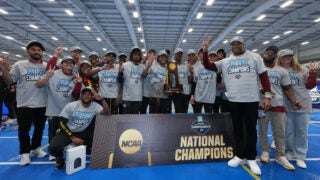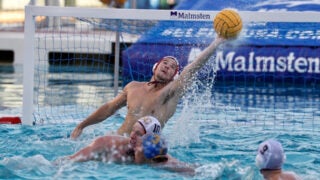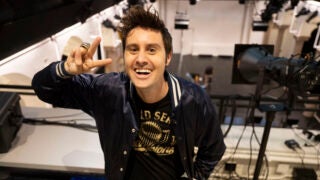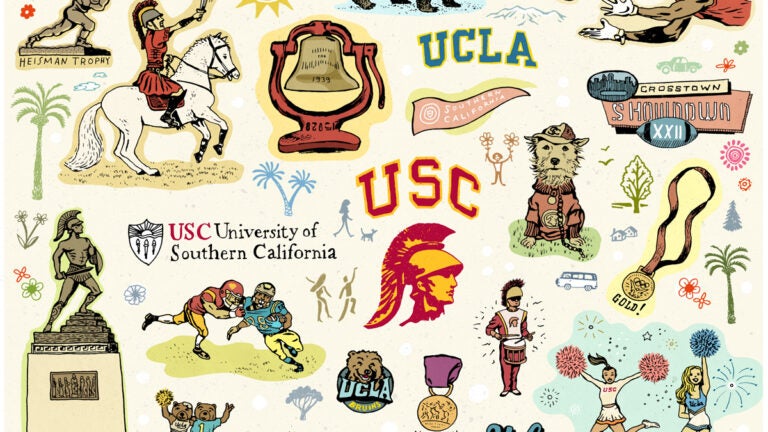
Illustrations/John Dykes
The USC-UCLA Rivalry: What You Need to Know
How do these two fierce competitors really match up when it comes to sports, marching bands, school spirit and academics?
Only 11 miles separate USC’s University Park Campus and UCLA’s campus in Westwood. In the minds of many of the Trojan and Bruin faithful, though, they couldn’t be further apart.
Los Angeles’ classic crosstown college rivalry comes down to (mostly) friendly competition, from academic quality to annual spirit traditions. But nothing distills the USC-UCLA discord to its essence like athletics — especially football.
Maybe the feud dates back to their first football showdown in 1929. The 76-0 rout by the Trojans that day remains the most lopsided victory in the series. Bruin supporters might focus on men’s basketball instead (yes, 11 national championships, impressive). Talking points abound, and on Saturdays during autumn and winter, so does the trash-talking.
Leading up to this year’s rivalry game this weekend, we offer our own snapshot of the competition below. If you’re a fan of either Los Angeles university, it’s OK if you get a little fired up as you read it. After all, as famed Bruin football coach Red Sanders liked to say, the USC-UCLA rivalry isn’t a matter of life or death: “It’s more important than that.”
![]()
The USC-UCLA Rivalry: Football, Fans and Fixations
Dating back to their first matchup nine decades ago, USC holds the edge over UCLA in football with an overall record of 48 wins, 32 losses and seven ties.
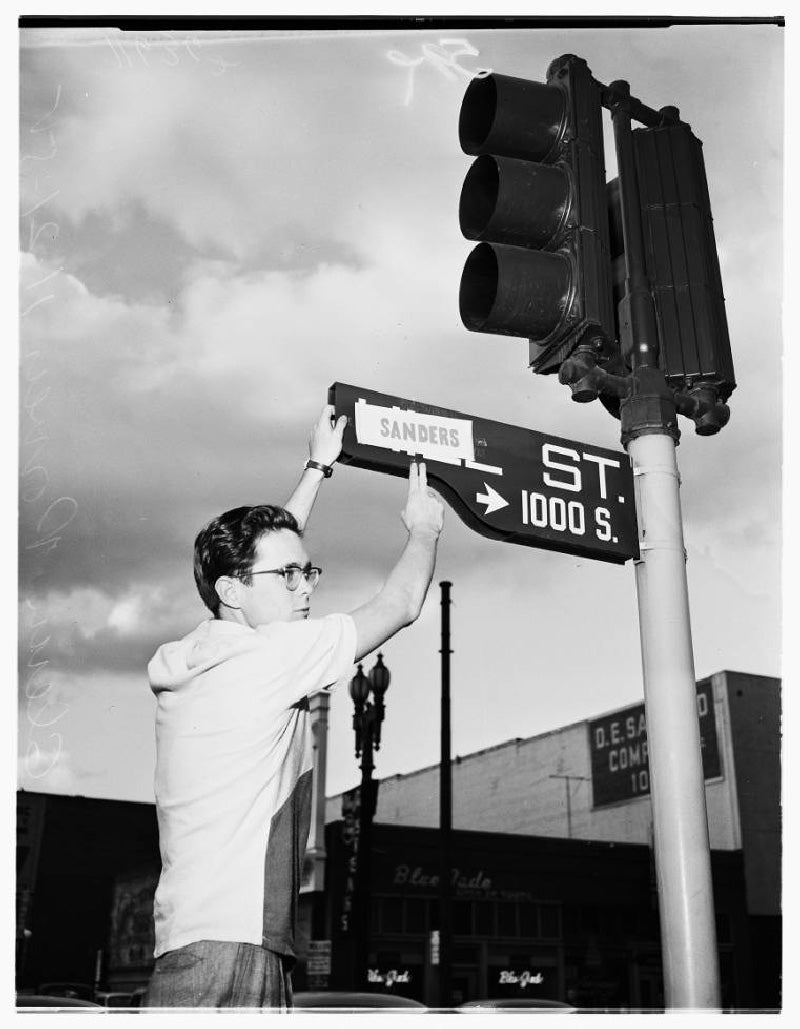
And to each year’s victor go the spoils: a 295-pound brass bell.
Originally mounted atop a Southern Pacific freight train, the Victory Bell came to symbolize the rivalry — after a bit of chicanery. The UCLA Alumni Association had donated the bell to UCLA in 1939, and Bruin cheerleaders marked each UCLA point with a resounding clang. But after two seasons, some USC fans had enough of the ringing. Members of USC’s Sigma Phi Epsilon fraternity absconded with the bell after UCLA’s season opener in 1941 and kept it hidden for more than a year.
When evidence of the stolen noisemaker resurfaced in a USC publication, UCLA students retaliated by painting Tommy Trojan blue. USC students struck back by burning USC initials into a lawn on UCLA’s campus. Anxious to stop the hijinks, the USC president threatened to cancel the annual football game if any more mischief occurred. Then, in 1942, the student body presidents reached a deal: The winner of the football game would keep the bell for the rest of the year.
Since that 1942 showdown — a 14-7 UCLA win — students from the victorious school have sandblasted and painted the bell’s carriage cardinal (43 times) or blue (32 times).
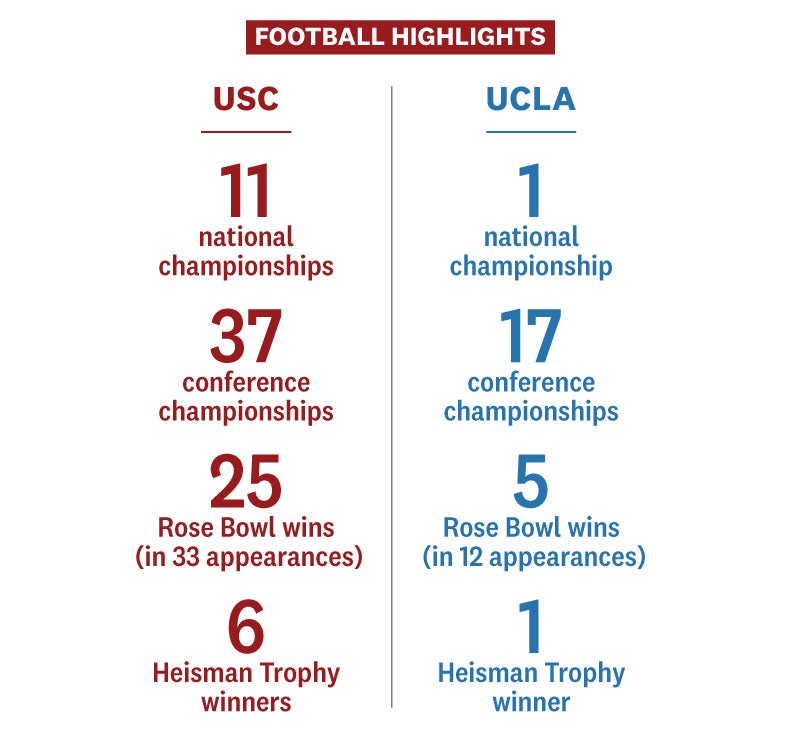
The Fight for the Crosstown Cup
The Crosstown Cup, known at one point as the Gauntlet Trophy, is a season-long competition that compares the Trojans and Bruins in every sport from basketball to water polo. The winner of each head-to-head matchup earns points. At the end of the year, whoever accumulates the most points wins. In the contest’s 18-year history, USC has netted 11 wins, including a streak of five consecutive years from 2008 to 2012.
The USC-UCLA rivalry just might bring out the best in both universities: As of Jan. 15, 2020, UCLA has the second-most NCAA Division I championships in the nation across all sports (118), and USC follows in third (107).
Going for Gold: How USC and UCLA Compare in Olympic Honors
No other university has produced as many Olympic athletes and medalists as USC. Since the 1904 Olympic Games, 472 Trojan athletes have represented Team USA, including Janet Evans ’95, Allyson Felix ’08, Lisa Leslie ’94 and John Naber ’77.
But UCLA also boasts a rich Olympic heritage. Legendary athletes like Jackie Joyner-Kersee ’86, Rafer Johnson ’59, Lisa Fernandez ’95 and Florence Griffith Joyner ’83 stand among the Bruin medal winners. USC has an edge in this one, but UCLA still gets a nod of respect.
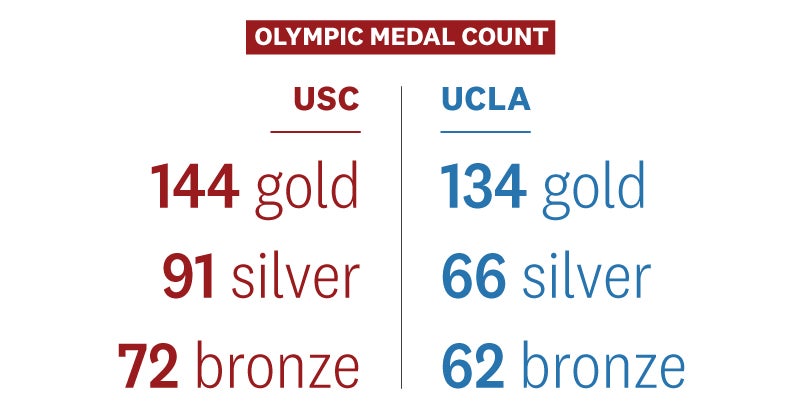
Battle of the Mascots
What’s a great rivalry without symbols to rally each side’s fighting spirit?
Traveler embodies the spirit of ancient Troy. USC’s official mascot since 1961, this noble white steed fires up the crowd during football games at the Los Angeles Memorial Coliseum. After every touchdown, Traveler gallops down the sideline as the Trojan Marching Band blasts “Conquest.”
Other USC mascots also popped up through the years, some more official than others. Arguably the most famous remains George Tirebiter. Known for chasing cars across the University Park Campus, the terrier first appeared at football games in the 1940s. Students quickly adopted him as a campus hero, despite his reputed mean streak. Tirebiter’s notoriety only grew when he attacked UC Berkeley’s mascot in 1947. He posed with homecoming queens, rode in parades and even survived having “UCLA” shaved on his hindquarters during an infamous Bruin dognapping. After his untimely death by automobile in 1950, several other Tirebiters followed.
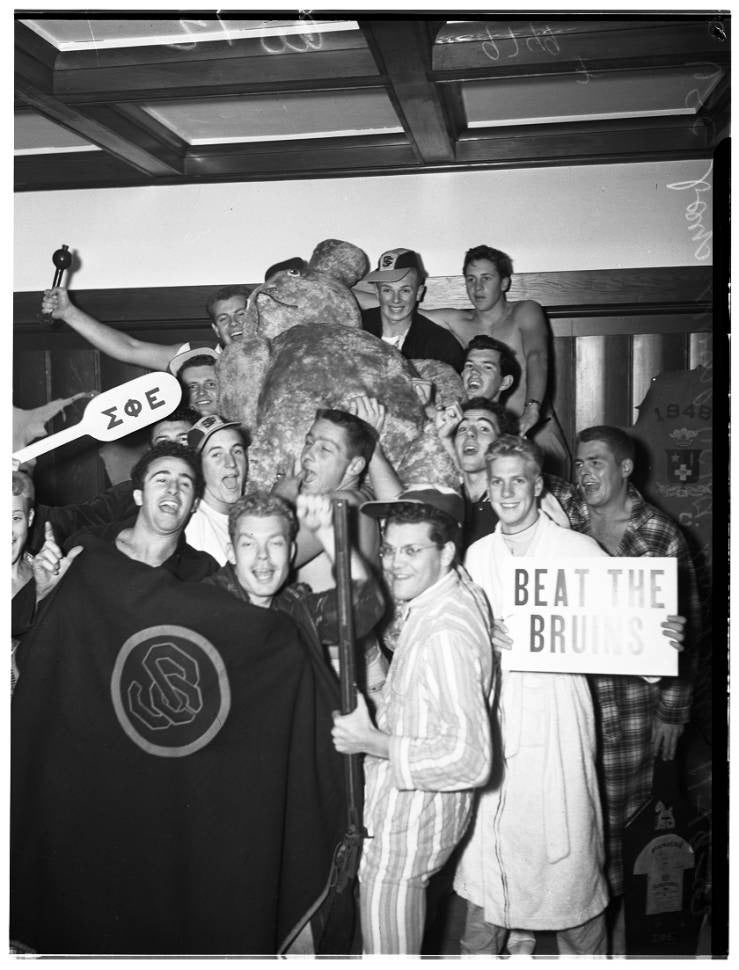
UCLA also has its share of memorable mascots. In the 1930s, a live bear and its trainer appeared at games. That proved unwieldy. After several other attempts to bring in live bear mascots in the 1950s and 1960s failed, the Bruins settled on costumed students. Joe Bruin and Josephine “Josie” Bruin are now a familiar presence at UCLA athletic events.
Another prominent symbol of USC’s “Fight On” spirit is The Trojan Shrine, often referred to as Tommy Trojan. The bronze statue of the warrior, sculpted by Roger Noble Burnham and unveiled in 1930, stands at the heart of the University Park Campus. Its base displays the university seal and the five qualities of the ideal Trojan: faithful, scholarly, skillful, courageous and ambitious.
UCLA’s campus across town boasts its own bronze monument: The Bruin, a 2-ton bear sculpture by artist Billy Fitzgerald. Unveiled by the UCLA Alumni Association in 1984, it stretches 10 feet long and stands 6 feet tall.
Both statues naturally have become the target of mischievous pranksters, particularly during the leadup to the annual football showdown. Tommy Trojan got his first, but not last, coat of blue paint in 1941. USC vandals have splattered The Bruin with cardinal and gold several times as well. Security measures now go into effect each autumn in the week before the USC-UCLA rivalry game. Guardians wrap Tommy in plastic and duct tape, and The Bruin goes into hibernation in a plywood cave.
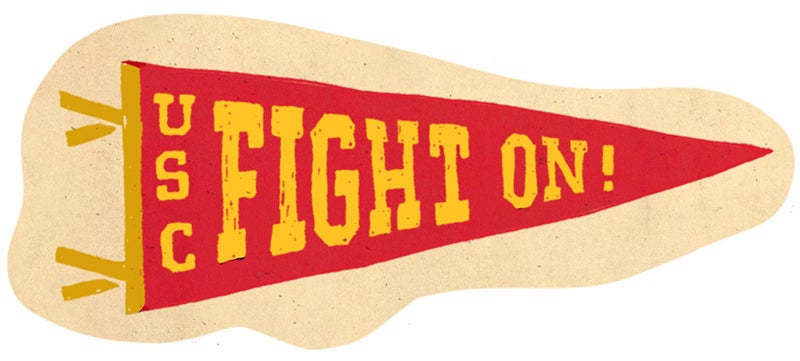
Drumbeats of the Long-Time USC-UCLA Rivalry
We’d be remiss if we didn’t include the soundtrack to this longstanding crosstown beef. In this corner, wearing cardinal-and-gold capes and sporting sunglasses, are the 300-plus members of the Trojan Marching Band. In that corner, draped in blue and gold and blaring out its trademark “Solid Gold Sound,” is the UCLA Bruin Marching Band.
The USC crew has earned its reputation as “The Spirit of Troy” many times over. The Trojan Marching Band has appeared at every USC football game since 1987 (excluding the 2020 season due to COVID-19 restrictions). Members also pump up crowds at basketball games and other university events. Playing the epic fanfare of “Tribute to Troy” is, of course, mandatory. Across town, the Bruin contingent keeps its fanbase riled up with favorites like “The Bruin Warriors,” “Strike Up the Band for UCLA” and plenty of Bruin “eight claps.”
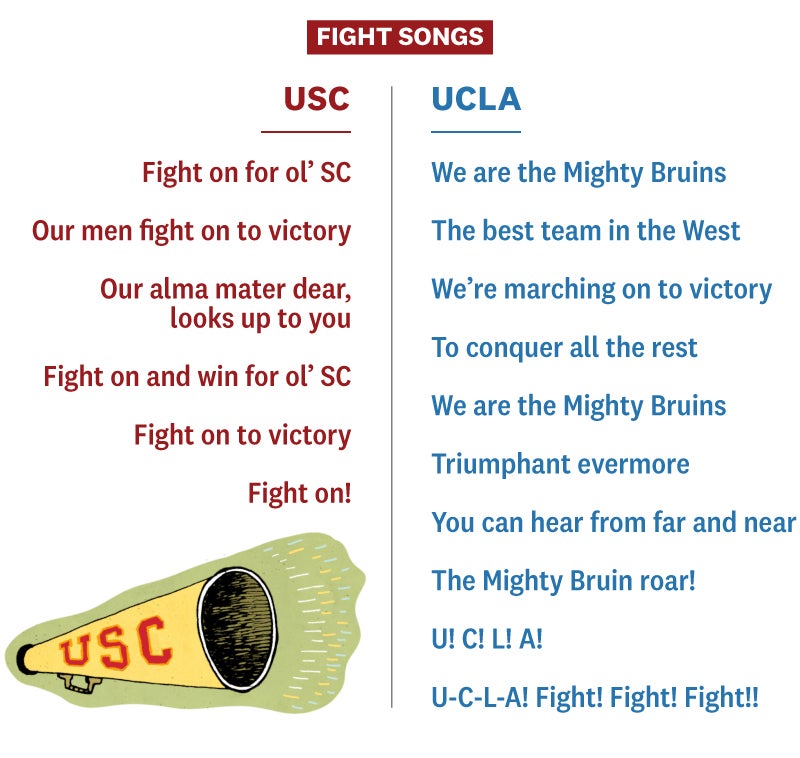
Report Card: USC and UCLA Earn A’s
On the academic side of the USC-UCLA rivalry, both universities have plenty of brainpower in the classroom to brag about, whether it’s their students or their professors.
USC’s distinguished faculty features dozens of recipients of major national honors, including the National Medal of the Arts, National Medal of Science, Guggenheim Fellowship and Pulitzer Prize. USC students have had similar success netting national and international scholarships, awards and honors.
UCLA’s award-winning faculty includes Nobel Prize winners, Pulitzer Prize recipients, a Fields medalist and two Turing Award winners. UCLA students have also cultivated a sterling academic reputation through the years, with numerous scholarship and fellowship winners.
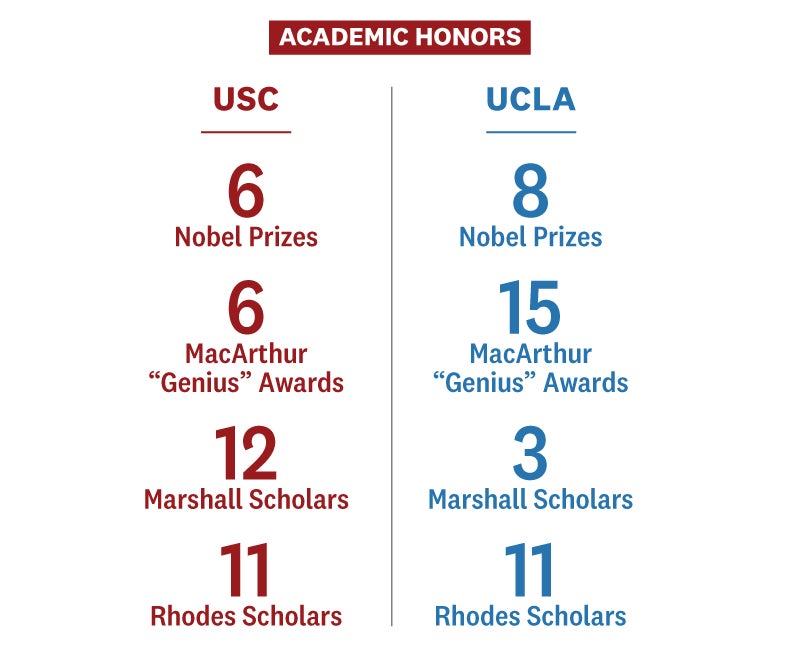
Editor’s note: All statistics related to USC football do not reflect vacated wins or awards.

